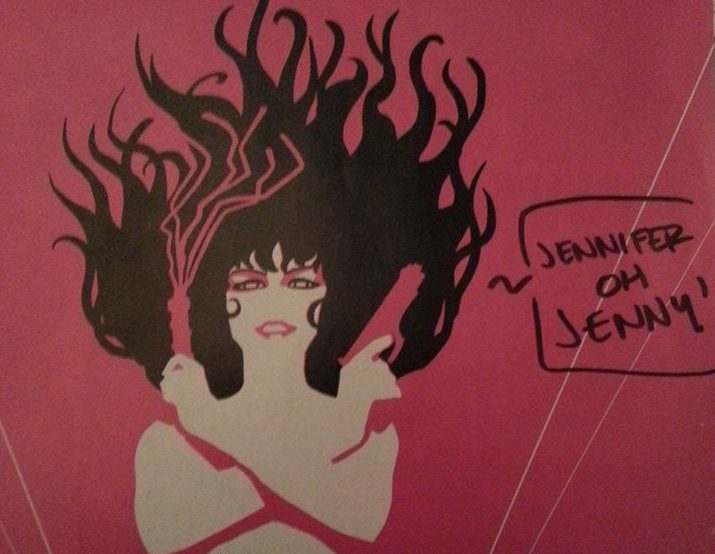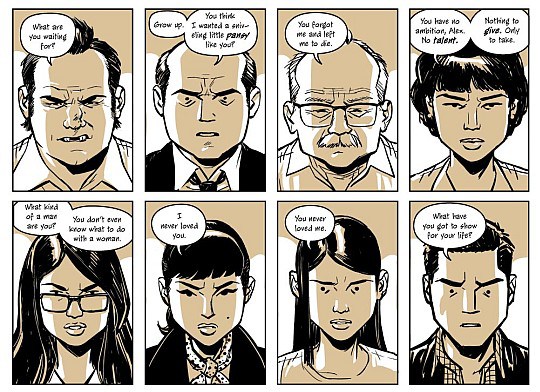Thought Bubble’s comic convention just keeps getting bigger and better every year. Not that I haven’t enjoyed every year I’ve been to the convention, which is four now, but this year’s convention was well-run, easy to navigate and seemed to grow and adapt to the needs of its visitors.
On the Saturday, I was lucky enough to get a few signatures from some of my favourite artists and writers. First of all, Cameron Stewart signed my copy of Sin Titulo (which I reviewed a while ago for Travelling Man) which was lovely; then a half hour queue lead me to Matt Fraction who signed my Hawkeye graphic novel (review) and first issue of Sex Criminals (just you wait until my review of this!). When I told Matt that I thought Sex Criminals was important, and would go down in history he sniggered at “go down”. Wonderful. I also had The Wake issue 1 signed by Sean Gordon Murphy who was kind enough to talk to me for a while on the Sunday: that interview will be up soon.
Then came the panels. First up was Image Comic’s Independence in the UK panel, which actually only had one third British panelists, but ah well. I always like the independence talk, it’s exciting to hear creators talking about being given the freedom to do their own work, which invariably ends up criticising Marvel and DC’s attitude toward the artists and writers. This made it much more strange when the next panel came out – the Marvel talk, which was obviously designed to big up the publishing house. It was absolutely hilarious though – the constant abuse of Jamie McKelvie from Kieron Gillen, David Aja finding it near impossible not to swear, and the dynamic married duo of Matt Fraction and Kelly Sue Deconnick. If comic conventions had Kings and Queens like proms, it would definitely have been them this year.
For Sunday, I kicked off the convention with the Diversity in Comics panel which was incredibly inspiring. One of my favourite speakers was Howard Hardiman, a self-proclaimed “queer cripple” with a fantastic sense of humour; after the panel I went to find his table, had a really interesting conversation with him about gender in Greek and Roman times and he signed a copy of The Lengths for me. I read the book on the train home and absolutely loved it; really brutal but touching. A review may come. I also really enjoyed hearing from Fiona Stephenson who has a very unique perspective, being a feminist comic veteran who now deals in stereotypical aesthetics of female beauty. Everyone else was fantastic too, of course.
The biggest change for me going into the weekend was the conversion of Women in Comics to Diversity in Comics. Traditionally, Women in Comics was my highlight of the weekend – a group of intelligent and inspirational women discussing one of my favourite topics – so I wasn’t sure how this change would go. But I have to say that it was a massive improvement. While I loved the old panel, after three visits it was beginning to feel like it maybe wasn’t making any forward progress; and to be perfectly honest, it’s become so much more even in terms of gender at cons. That’s why it was great to open the debate to other issues like sexuality, disabilities and race, because these are the areas which are truly still minorities in the mainstream comics fan world. When an issue is personal to you as feminism is to me, it’s easy to care about it but it’s important to care about other people who have problems you don’t know and don’t understand, and I walked out of the Diversity in Comics panel feeling hopeful for the future.
The other significant improvement that I appreciated was the streamlining of the buildings. The addition of the Allied London Hall meant that a proper exploration of the festival took two days, and it was nice to have an unfamiliar spot to wander around in. Although I didn’t go into Bub’s Lounge, I heard it was lovely and chilled out in there, and the temporary Cafe solved delicious pastries and coffee! Which was good because Tesco had run out of sandwiches by 2pm on the Saturday. And while the extra panel area was a little cold, it was nicer than having to go to the top floor of the casino (however lovely those rooms were) and helped the whole event feel much more seamless.
And finally, some of the best goodies I picked up over the weekend (on my severely limited budget).
- The Lengths. As I said, it’s a great book and meeting Howard was lovely
- Briar, a free comic being handed out from the same team as Porcelain: A Gothic Fairytale (my review here)
- A beautiful sterling silver clockwork earring with its own origin story in comic form!
- A lovely brown card A3 print, I believe the artist is Kate Mia White although I may be wrong. Incredibly intricate pen work.
And more…I’m sure! I haven’t made it through all of my finds from the weekend yet.
- Sin Titulo
- Sex Criminals
- The Lengths
- Hawkeye








